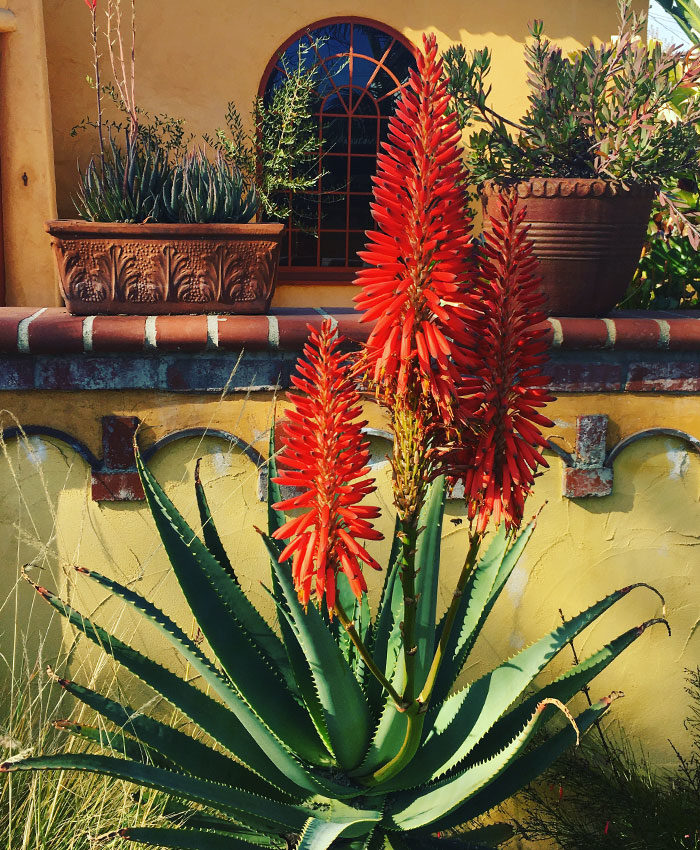
It’s Valentine’s Day month, so plant something red! Or gift a red plant to your significant other. This Super Red® aloe (Aloe ‘LEO 3711’, Zones 9–11) has glorious dark red flowers blooming high above gray-green leaves. It is a heavy bloomer, starting as early as late summer and lasting until late February. It will reach about 4 to 5 feet high and 3 to 4 feet wide.
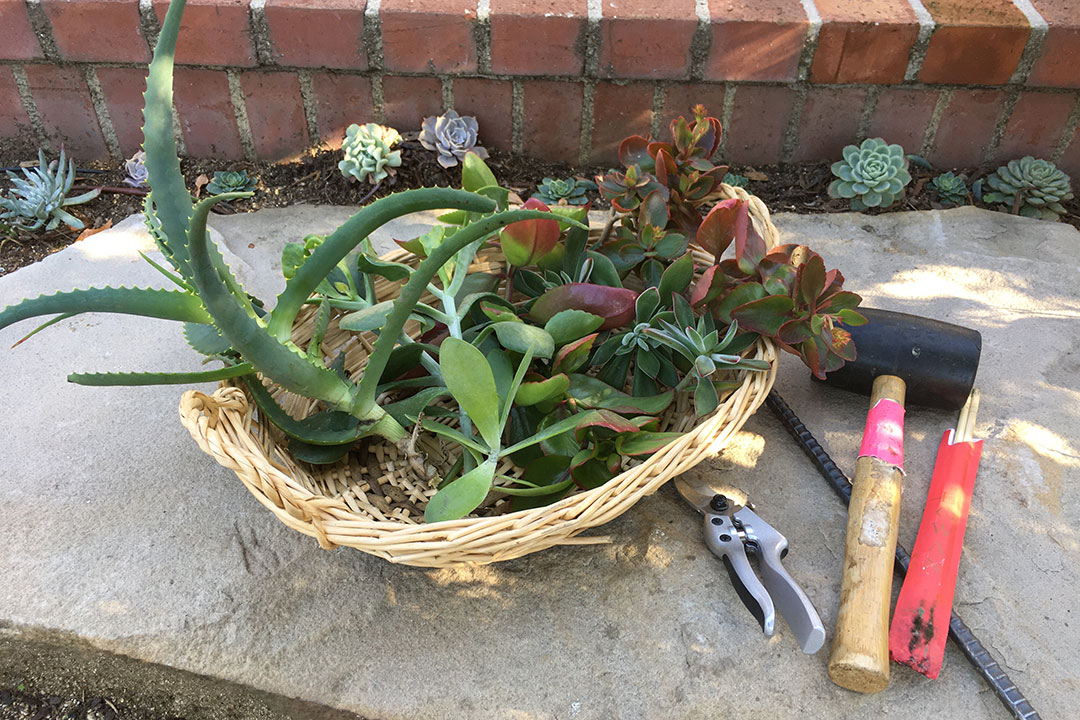
Propagate succulent cuttings. Our succulents have been thriving with the rains we have had so far this season. Now is a good time to gather cuttings to plant throughout your own garden or to share with friends and neighbors. I save the chopsticks from our ramen take-out and use them to poke holes where I want to plant smaller cuttings. For larger succulents, I use a small length of rebar and pound it in with a mallet to create a hole. Whichever tool you are using, make the hole just deep enough for the stem of your cutting, and wiggle it to get enough width. After inserting the cutting, use your tool to push the soil back around the stem. This allows you to fit your new plants into the tightest spaces with the least amount of disturbance to the soil and other plants possible.
Trim your grasses. If you have not already trimmed back your grasses, get it done this month before they begin their spring growth. Trim grasses by gathering all the blades and holding them upright, then shearing them straight across. If it is a large species of grass, you can tie it up with a rope to hold it in place before cutting. By using this method, you are giving the grass a nice haircut. It is much more aesthetically pleasing than shearing them vertically or shaping them into little meatballs.
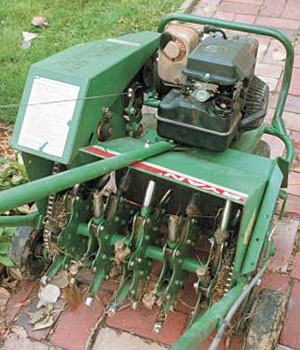
Aerate your lawn. If you have any amount of lawn, now is an excellent time to aerate. The soil under lawns tends to get incredibly compacted. When it rains, the water runs off more than it absorbs. In all areas of the garden, it is important to create a healthy soil “sponge” to absorb as much water as possible. With lawns, specifically cool season grasses, this is done most effectively by aerating with some sort of coring machine that removes the plugs from the soil. After aerating, fill in all the holes that have been created with a fine compost or worm castings.
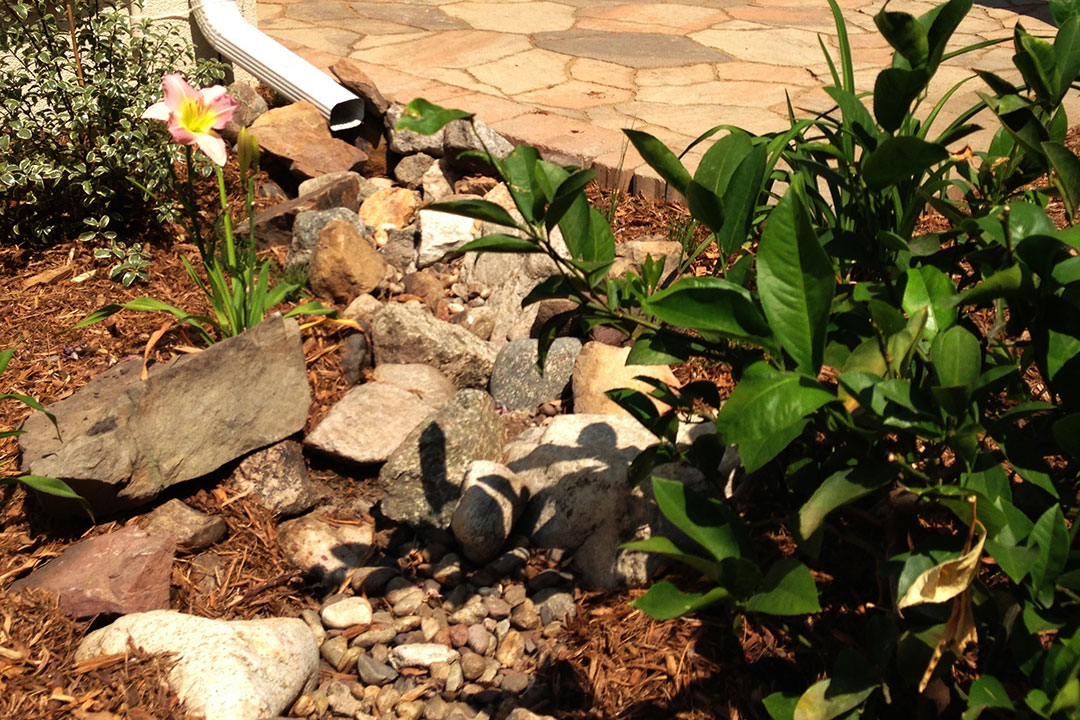
Look for ways to conserve water. We have been getting some rain this year, and there is hopefully more to come. Most deciduous trees have shed their leaves by now, so this is a good time to give your gutters another cleaning. Unless you are already capturing all rainwater on site, take a look around and see if there are any opportunities to hold on to any water that is getting sent out to the street or otherwise being wasted. One of the easiest ways to conserve water is to change the direction of your downspout. In the image above, the downspout was moved so that rainwater is directed into a garden bed rather than the driveway it was running down before.
—Francesca Corra, APLD, is a nationally certified landscape designer and owner of Dirt Diva Designs in Studio City, California.


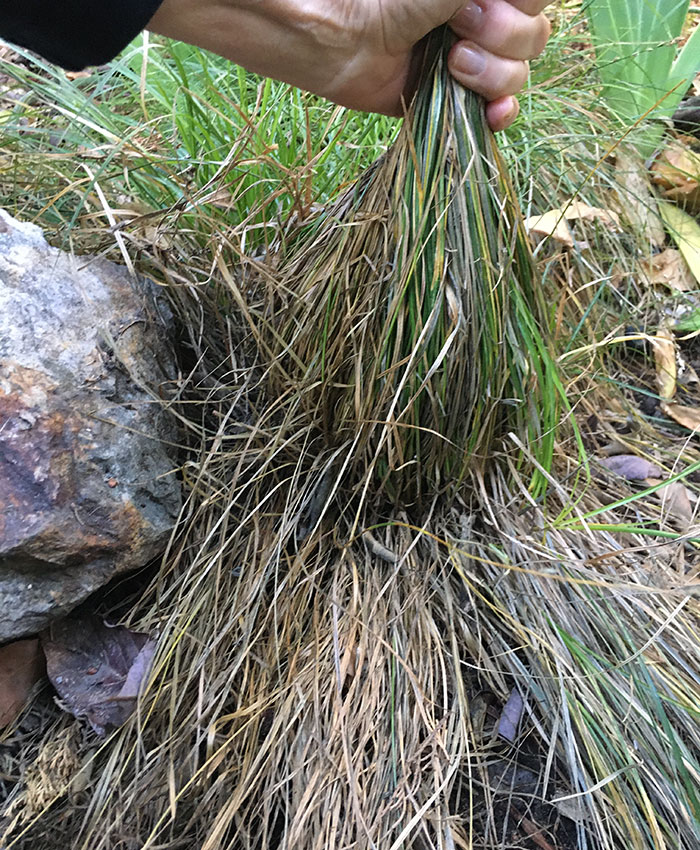

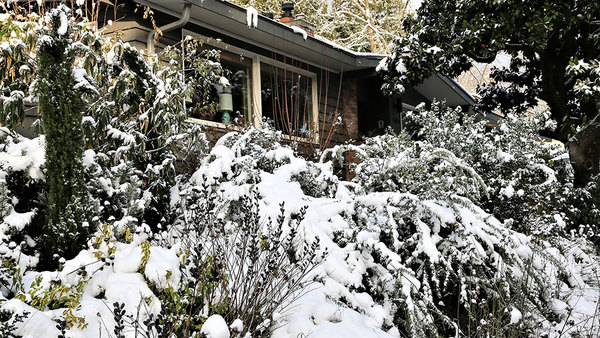















Comments
Log in or create an account to post a comment.
Sign up Log in